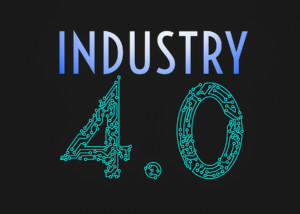 Changeovers take away time from production, and often require larger lot sizes as well. The best response would be of course to reduce changeover times, but this is a lot of work and may not always be possible. Another frequent option is to sequence the changeovers to reduce the overall changeover time. This post looks at a way to sequence production while also being able to prioritize production.
Changeovers take away time from production, and often require larger lot sizes as well. The best response would be of course to reduce changeover times, but this is a lot of work and may not always be possible. Another frequent option is to sequence the changeovers to reduce the overall changeover time. This post looks at a way to sequence production while also being able to prioritize production.
Can You Plan Around Your Fluctuations?
 Balancing the need of high material availability with low inventory is tricky. Pull systems are a very good way to achieve this. But sometimes people argue with me that planning can be better if you use all the available information to create a production plan which then outperforms a pull system. In theory, this could work, but in practice it rarely does. After all, that is what conventional push systems are trying to achieve, usually with mediocre results. Let’s have a look.
Balancing the need of high material availability with low inventory is tricky. Pull systems are a very good way to achieve this. But sometimes people argue with me that planning can be better if you use all the available information to create a production plan which then outperforms a pull system. In theory, this could work, but in practice it rarely does. After all, that is what conventional push systems are trying to achieve, usually with mediocre results. Let’s have a look.
The Boss Knows Best … or Does He?
 This post is on a topic you probably all have had experience with at one point or another (or even all the time) in your career. A superior makes a decision, and you are internally wincing because you know right away that it is a really bad idea. In this post I would like to talk about uncertainty and decision making, and how to make better suggestions. If you are a regular reader of my posts, you probably already know the answer: Involve the employees! This post is a continuation of my previous post on military leadership.
This post is on a topic you probably all have had experience with at one point or another (or even all the time) in your career. A superior makes a decision, and you are internally wincing because you know right away that it is a really bad idea. In this post I would like to talk about uncertainty and decision making, and how to make better suggestions. If you are a regular reader of my posts, you probably already know the answer: Involve the employees! This post is a continuation of my previous post on military leadership.
Military Leadership and Disobedience
 In a recent LinkedIn discussion, there was a disagreement on leadership favoring a much more authoritarian leadership style and stating “A general who asks his soldiers if they will fight, he is not yet ready for war.” I disagree with this view, both for military and especially for manufacturing. Yet, this discussion inspired me to write two posts on the difficult subject of leadership. This first post here looks in more detail at military leadership, and the occasional need of soldiers to refuse, ignore, or disobey an order. A second post will look at what this means for manufacturing.
In a recent LinkedIn discussion, there was a disagreement on leadership favoring a much more authoritarian leadership style and stating “A general who asks his soldiers if they will fight, he is not yet ready for war.” I disagree with this view, both for military and especially for manufacturing. Yet, this discussion inspired me to write two posts on the difficult subject of leadership. This first post here looks in more detail at military leadership, and the occasional need of soldiers to refuse, ignore, or disobey an order. A second post will look at what this means for manufacturing.
Ten Years of Industry 4.0-Quo Vadis?
Work Improvement before Equipment Improvement
 When improving a system, Western engineers love to take the technical approach and to optimize the machines and tools. However, at Toyota this is seen differently. At Toyota, they try to address a problem by first training the people, followed by improving the standards and the layout, before improving the equipment and finally twiddling with the design. Let’s have a closer look at how Toyota is approaching improvements.
When improving a system, Western engineers love to take the technical approach and to optimize the machines and tools. However, at Toyota this is seen differently. At Toyota, they try to address a problem by first training the people, followed by improving the standards and the layout, before improving the equipment and finally twiddling with the design. Let’s have a closer look at how Toyota is approaching improvements.
How to Convince Your People to Do a Lean Transformation
 Many companies want to achieve a lean production system. For this, these companies conduct lean transformations. And this in turn needs the buy-in of the people who will be working with the transformed system later on, usually the operators. However, a problem many lean transformations encounter is that … the operators don’t want to transform! This is of course a challenge. Let’s have a look at why this happens, and how you can prevent and overcome the issue.
Many companies want to achieve a lean production system. For this, these companies conduct lean transformations. And this in turn needs the buy-in of the people who will be working with the transformed system later on, usually the operators. However, a problem many lean transformations encounter is that … the operators don’t want to transform! This is of course a challenge. Let’s have a look at why this happens, and how you can prevent and overcome the issue.
About the Value of Disagreement for Leadership
 Leaders not only make decisions, but also have a large impact on the mood and the culture in a company. Often, they like to be right. Yet, they are only humans, they don’t know everything, and they do make mistakes. Hence, a good culture for disagreement is important to make better decisions. In this post I would like to talk more about the value of disagreement, and why it is not common to find it in industry.
Leaders not only make decisions, but also have a large impact on the mood and the culture in a company. Often, they like to be right. Yet, they are only humans, they don’t know everything, and they do make mistakes. Hence, a good culture for disagreement is important to make better decisions. In this post I would like to talk more about the value of disagreement, and why it is not common to find it in industry.

